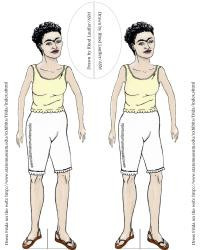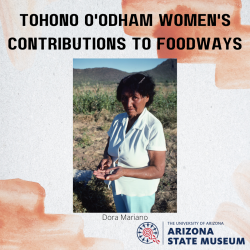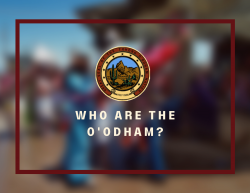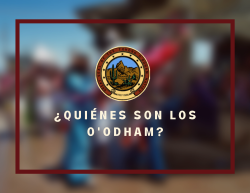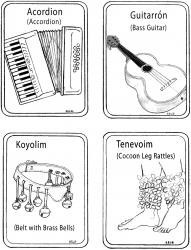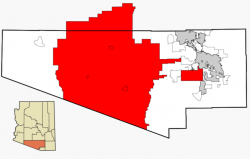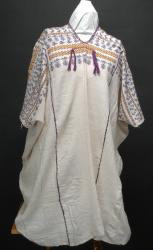Arizona State Museum's collections
What Would Frida Wear?
<p><em>This collection provides students the opportunity to dress artist Frida Kahlo in traditional Mexican garb that she favored, the huipil and the quechquemitl.</em></p>
<p>Frida Kahlo was born in Coyoacan on July 6, 1907. Thoughout her life Frida was a fierce nationalist and a vocal socialist. As a reflection of her beliefs, Frida often wore the indigenous clothing of Mexico. This can be seen both in photographs of her and in her paintings. Frida completed 143 paintings during her lifetime, 55 of which are self-portraits. Many of these self-portaits are among her most famous works. </p>
<p>Most of the costumes Frida wears were hand-woven, as well as hand embroidered and stitched. The colors and many of the symbols used in her work are clearly influenced by Mexican tradition.</p>
<p>She died in 1954.</p><p>#LatinoHAC<br /></p>
 Arizona State Museum
Arizona State Museum
25
Tohono O'odham Women's Contributions to Foodways
<p>Using primary sources from the Arizona State Museum, this collection highlights the role of Indigenous women of the Tohono O'odham Nation in traditional foodways as well as their involvement in contemporary effort to return to traditional foodways. It also provides general information about Tohono O'odham foodways. The Tohono O'odham reside in southern Arizona and northern Mexico. The Arizona State Museum is on the land and territories of Indigenous peoples. Today, Arizona is home to 22 federally recognized tribes, with Tucson being home to the O'odham and the Yaqui. This collection is a great resource for teachers, students, and/or parents.</p>
<p>This Learning Lab was created by a student in the summer 2021 Smithsonian Affiliate Digital Learning and Engagement Internship, in partnership with Emerson Collective and the Arizona State Museum, a Smithsonian Affiliate. #SAintern #RaceAndSocialJustice #WomensHistory #arizonastatemuseum #Indigenouswomen #TohonoOodham #NativeAmerican #Indigenous #AmericanIndian #food #foodways #Arizonahistory #Tucson #Arizona #southernArizona #foodsovereignty #NativeAmericanfoodways #AmericanIndianfoodways #Indigenousfoodways</p>
 Arizona State Museum
Arizona State Museum
35
The Tohono O'odham and Their Relationship to Water
<p>The Arizona State Museum, University of Arizona, is located on land that has been inhabited by Indigenous peoples for 13,000 years. Today, the Tucson area is home to the Tohono O’odham and the Pascua Yaqui. This Learning Lab features collections and educational resources from Arizona State Museum pertaining to Tohono O’odham history and culture. This collection was made with the hope of giving people an overview of the Tohono O'odham and their relationship with water throughout history. </p>
<p>This Learning Lab was created by a student in the summer 2021 Smithsonian Affiliate Digital Learning and Engagement Internship, in partnership with Emerson Collective and the Arizona State Museum, a Smithsonian Affiliate. #SAintern #RaceAndSocialJustice #arizonastatemuseum #TohonoOodham #NativeAmerican #Indigenous #AmericanIndian #waterrights #tucson #southernarizona #arizonahistory #conservation</p>
<p><strong><em>S-ma:c ‘ac mac ‘an Tohono O’odham ha-jeweḍga da:m oyopo: </em></strong><strong>We acknowledge our presence on Tohono O'odham ancestral lands</strong><strong><em>"- Land </em><em>Acknowledgment by the </em><em>Tohono O'odham Student Association at UA</em></strong></p>
<p></p>
 Arizona State Museum
Arizona State Museum
30
Basketry Traditions within the Tohono O'odham tribe
<p>Using primary sources from the Arizona State Museum, this collection provides an introduction to Tohono O'odham basketry traditions. The Tohono O'odham Nation is located in southern Arizona and northern Mexico. <br></p>
<p><strong><u>Land Acknowledgement Statement</u></strong></p>
<p>The University of Arizona sits on the original homelands of indigenous people who have stewarded this land since time immemorial. Aligning with the university’s core value of a diverse and inclusive community, it is an institutional responsibility to recognize and acknowledge the people, culture, and history that make up the Wildcat community. At the institutional level, it is important to be proactive in broadening awareness throughout campus to ensure our students feel represented and valued.</p>
<p>This Learning Lab was created by Egypt Watson, a Summer 2021 Smithsonian Affiliate Digital Learning and Engagement Intern, in partnership with Emerson Collective and the Arizona State Museum, a Smithsonian Institute affiliate. #SAintern #RaceAndSocialJustice #WomensHistory #arizonastatemuseum #Indigenouswomen #TohonoOodham #NativeAmerican #Indigenous #AmericanIndian #food #foodways #Arizonahistory #Tucson #Arizona #southernArizona #foodsovereignty #NativeAmericanfoodways #AmericanIndianfoodways #Indigenousfoodways</p>
<p>Thank you,</p>
<p>Egypt Watson </p>
<p>Chicago, IL, </p>
<p>Loyola University of Chicago, 21'</p>
 Arizona State Museum
Arizona State Museum
18
Arizona State Museum Donald Cordry Photographs of Mexican Indian Costumes
<p>The Donald B. Cordry collection contains photographs of Mexican mask-makers and textile weavers. Many of these photographs appear in his two books <em>Mexican Masks</em> and <em>Mexican Indian Costumes</em>.</p><p>#LatinoHAC<br /></p>
 Arizona State Museum
Arizona State Museum
55

